navigation
Elopement Spots In Colorado
Hey, I'm eli
I’m not just your photographer—I’m your guide, planner, and adventure partner. I help you cut through the noise, ditch the stress, and craft a wedding day that actually feels like you.
From finding epic, off-the-beaten-path locations to making sure you have everything you need for an unforgettable experience—I’ve got you.
Elopement Spots In Colorado
May 30, 2025
So You’re Thinking About A Colorado Elopement, But Where?
You’re thinking about a Colorado elopement, and your first thought is probably one of the popular elopement spots in Colorado, like Rocky Mountain National Park, Breckenridge, or somewhere near Denver, right?
You’re not alone in this. The Front Range is what most couples picture when they think of the Colorado mountains. I get it. It has easy access to Denver and the Denver International Airport. It has big peaks, familiar names, and iconic spots like Garden of the Gods. And honestly, it is beautiful. But if you’re dreaming of a peaceful, adventurous elopement that feels like your own little world, we need to talk about why the Front Range might not be the location you’re actually wanting when looking for elopement spots in Colorado.
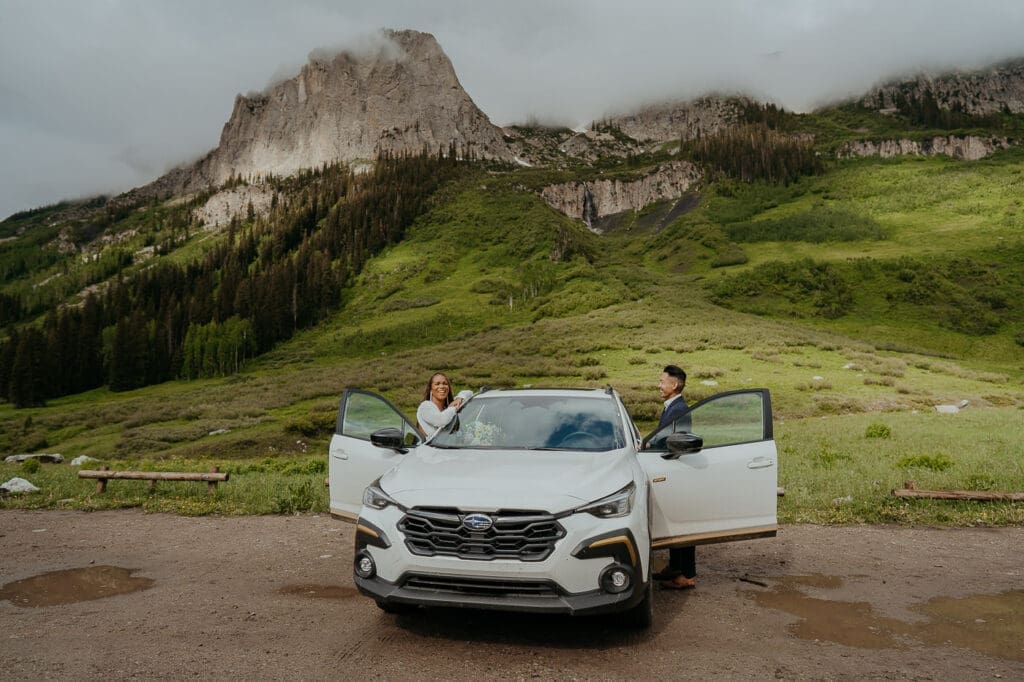
What Is The Front Range?
The Front Range can be somewhat confusing, especially for couples looking for elopement spots in Colorado. In Colorado, the Front Range has two meanings.
The first refers to the mountain range itself, which is the easternmost section of the Rocky Mountains and runs from Wyoming to Pueblo, Colorado. This mountain range includes well-known peaks like Long Peak, Pikes Peak, and The Flatirons.
The second meaning of the Front Range is what most people mean when they say the Front Range. It includes major cities along Interstate 25 like Fort Collins, Denver, Boulder, Colorado Springs, and more.
Understanding these definitions is important when planning a Colorado elopement. When couples say they want to elope in Colorado, they usually mean within a couple of hours of Denver, in places like Rocky Mountain National Park, Garden of the Gods, Chautauqua Park, or Estes Park.
Another popular Colorado elopement location is Breckenridge, specifically Sapphire Point. While Breckenridge isn’t considered part of the Front Range, it serves as a halfway point between convenience and a mountain escape since it is about two hours from Denver. Breckenridge is just one mountain town in Summit County alongside Frisco, Dillon, Keystone, and Copper Mountain.
The Front Range includes popular locations that are easy to access and frequently featured in a lot of “Best Places To Elope In Colorado” guides. But here’s what they don’t always tell you: just because it’s popular doesn’t mean it’s the best fit for you. The Front Range might be close and convenient, but if you’re craving an intimate experience, it can feel a little too crowded and have too many rules for an elopement that’s really about the two of you.
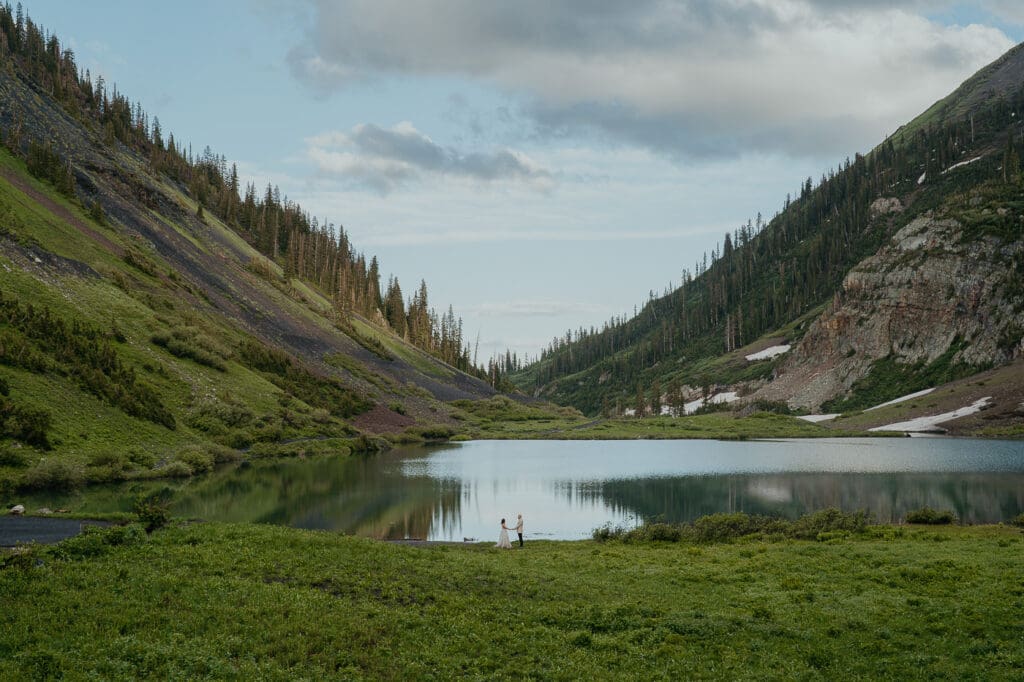
The Downsides of the Front Range for Elopement Spots In Colorado
Crowds + Permits = Not So Intimate
Rocky Mountain National Park is beautiful, no doubt. But it’s also in the top 5 most visited national parks in the United States. In 2024, Rocky Mountain National Park had approximately 4.15 million visitors. This means that even if you acquire a permit for your ceremony (applications are accepted one year in advance of your desired month, and they go fast), there’s a good chance you’ll be sharing that mountain experience with a ton of strangers and their iPhones.
Elopements are supposed to feel intimate and allow you to be present. It’s kind of hard to be in the moment when someone is yelling at their kids 10 feet from your ceremony spot.
Limited Privacy + Strict Rules
Colorado elopements that take place in Rocky Mountain National Park or other locations along the Front Range often require couples to stick to designated ceremony spots. This might work for some, but if you’re hoping to wander freely, find a spot that feels right in the moment, or just be a little more spontaneous, these rules can make couples feel boxed in real quick.
Colorado Weather Can Be Chaotic
Colorado weather is notoriously unpredictable, especially along the Front Range. There are more chances for wildfires in the summer, surprise blizzards in the spring, and sudden hailstorms. And since so many locations are higher-traffic, there’s not a lot of room to pivot if need be.
Weather can shift fast, even hour to hour. You might start the day with sunshine and end it with hail, rain, or unexpected snowfall, especially in the spring and fall.
During summer, afternoon thunderstorms are common. These thunderstorms bring lightning, heavy rain, and occasionally hail. Late summer and early fall may also see wildfire smoke, sometimes even from other states, which can affect visibility, air quality, and overall views.
Hard To Escape The City Feel
Since the Front Range is so easy to access, since you’re closer to cities, highways, and major tourist areas, it can be harder to escape the city feel and get the mountain escape you’re chasing. Even in spots that look remote in photos, you might hear traffic or see a parking lot in the background. You could be dodging other hikers or waiting for a family of five to finish their selfies before you can exchange your vows. If you’re looking for a more private, middle-of-nowhere location, the Front Range could fall short of your expectations.
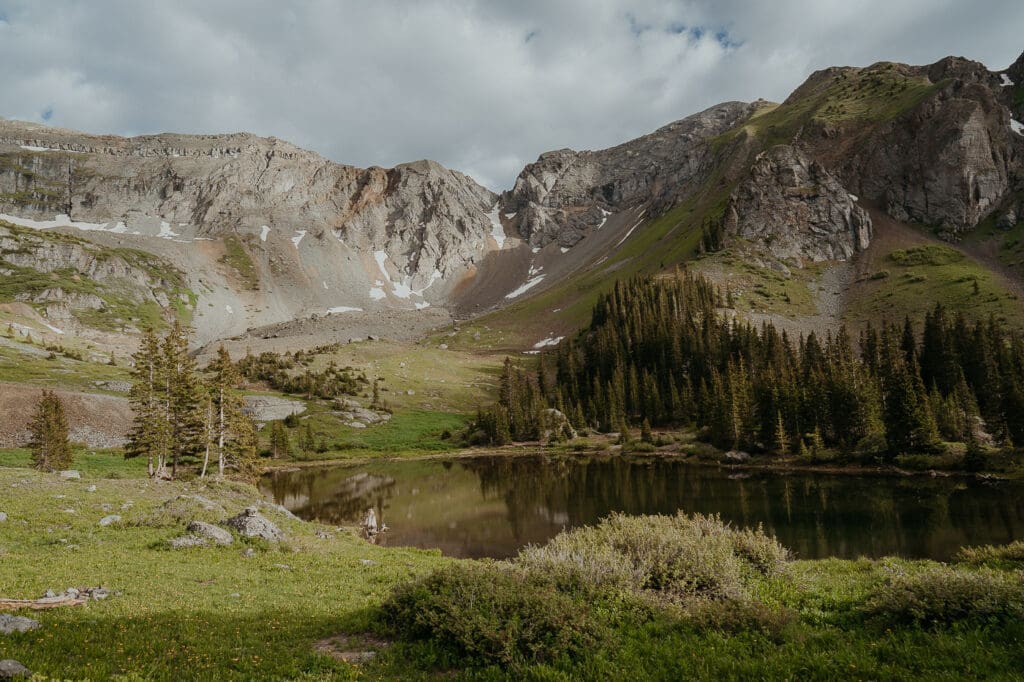
The Front Range Does Work For Some Couples
Let’s be honest: it’s not all bad. If you want an accessible location, if you’re working with a tight timeline, or simply want a quick legal ceremony and some photos close to Denver, the Front Range might actually be a great choice for that kind of Colorado elopement.
There’s nothing wrong with choosing the Front Range for your elopement. I just want to be upfront so you know what to expect if you decide to go that route.
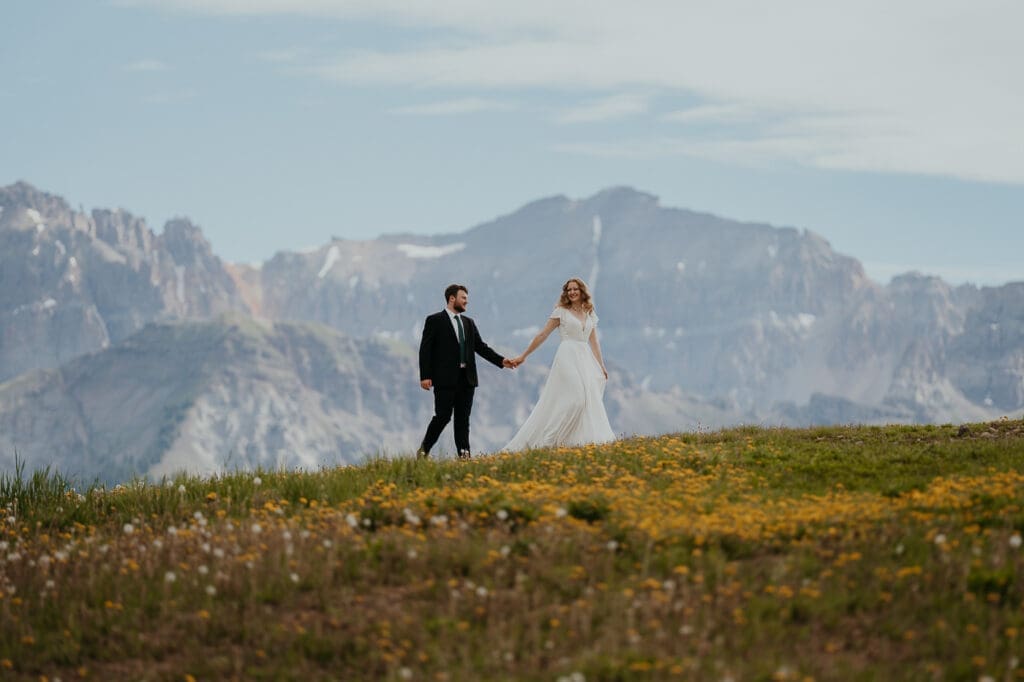
So Where Should You Look Instead?
If you’re dreaming of epic views without the crowds, strict permits, or the noise of city life, Colorado has no shortage of hidden gems that offer the unforgettable mountain experience you desire..
You don’t have to go completely off-grid to find it, but heading into the mountains farther from the Front Range opens up a whole new world for your elopement experience. If you’re craving space to breathe, stunning landscapes that stretch for miles, and a unique elopement experience, consider heading west of the Front Range toward the San Juan Mountains and Crested Butte.
San Juan Mountains
Think jaw-dropping peaks like nothing you’ll find on the Front Range or even near Breckenridge. This area is home to alpine lakes, mountain passes, and remote backroads that feel like a true mountain adventure. It’s also perfect for off-road Jeep elopements or hiking to tucked-away spots.
The San Juan Mountains are home to some of Colorado’s most iconic and remote towns: Telluride, Ouray, and Silverton. Each town has its own distinctive vibe and unique access to wildly dramatic landscapes you won’t find anywhere else in Colorado.
Crested Butte
Known as the wildflower capital of Colorado, Crested Butte is a colorful mountain town with big alpine views and a laid-back feel. This area has easy-access hikes, remote meadows, and aspen groves that make it beautiful in both summer and fall.
While Crested Butte is tucked away, it isn’t difficult to reach. Even during peak season, it’s surprisingly peaceful, giving you the space to truly be present and soak it all in. This town is beautiful, accessible, and still flies under the radar for most couples looking for elopement spots in Colorado. Hands down, one of Colorado’s best-kept secrets for elopements.
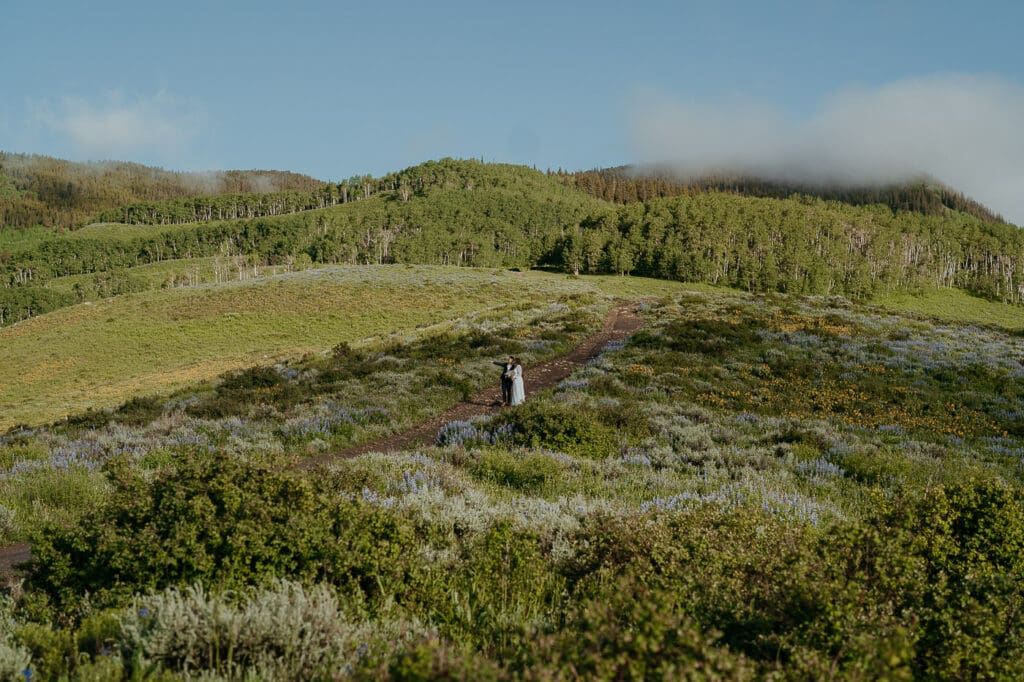
At The End Of The Day…
There’s no “right” way to plan a Colorado elopement, just the way that feels right for you. But if you’re longing for something wild and free, something you can feel in your soul, in a place that makes you come alive, it’s worth looking beyond the Front Range.
You deserve more than a busy overlook with strangers watching you exchange vows. Colorado has endless locations that feel like they were made just for you two. If the Front Range doesn’t feel right for you after reading this, trust that your perfect spot is still out there.
You’re an explorer at heart, and you’re in the right place to make your dream a reality. Don’t worry, I’ve got you.
Let’s find it together farther west.